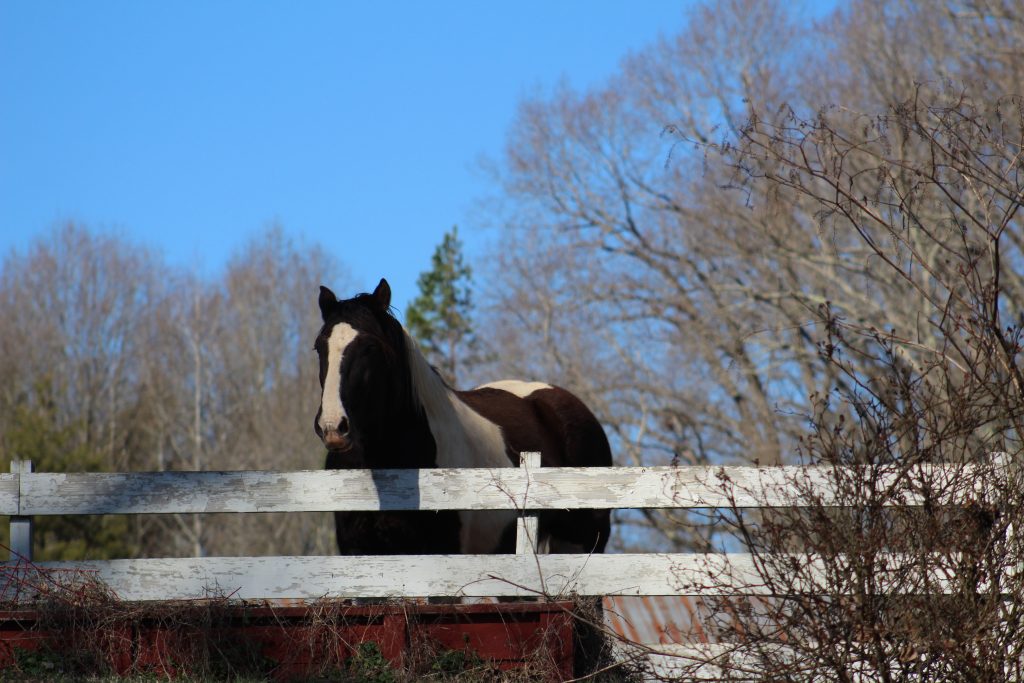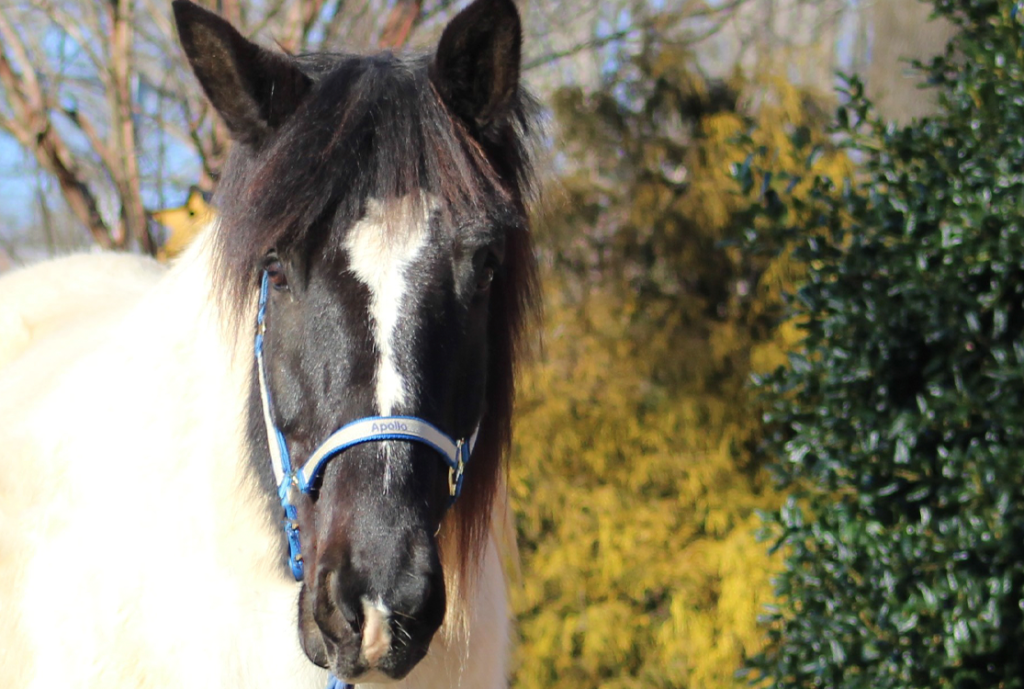The practice of yoga provides a wealth of benefits that enhance horsemanship and riding. The ability to ride depends on the horse allowing us to guide them without resistance, to trust us to make decisions and to follow our communication through what they are feeling from us. As the horse’s leader and guide, it is essential to maintain a calm and grounded presence, to stay attuned to the horse in the moment, to be aware of the subtle communications of the body, and to work from a place of compassion and good intentions. The more we cultivate these qualities before engaging with the horse the more successful we will be in creating a partnership of authentic connection and unity.
Yoga and Horses clinics begin with a traditional yoga class focusing on core concepts that apply directly to working with the horse. These include developing mindfulness of the breath, improving balance, stability and core strength, achieving more fluid and flexible movement, letting go of tension in mind and body. and increasing body awareness. These concepts are then applied to interacting with the horses on the ground and finally to riding in a way that supports the horse’s well-being. Just as groundwork prepares the horse for what’s to come when we transition to riding, time on the mat prepares the handler/rider to engage with the horse from a place of clarity and equanimity.
It Begins with the Breath
Pranayama, or control of the breath, is one of the eight limbs of yoga and is a core component of most yoga practices. The simplest version of breathwork is to notice the breath, notice if there is a fluid rhythm of inhaling and exhaling. Often in times of stress there is a tendency for the breath to become interrupted. The ability to maintain or restore deep and steady breathing has a profound effect on the nervous system, helping us to stay calm and grounded even in challenging situations. Staying aware of the breath also keeps our focus in the present moment. Since our energetic state and awareness affect our interaction with the horse, staying in control of ourselves and our breathing also helps the horse to stay calm and focused.
Releasing Tension
As we move through various asanas we experience sensations throughout the body. These sensations may be pleasant or, if we push too far, they can become uncomfortable or painful. This is the body’s way of communicating where there are restrictions. Restrictions can have physical or emotional causes. They can be the result of recent injury or something that happened long in the past. As long as there is not a current reason to avoid movement in a particular area, restrictions can be gently released by listening and working with the body.
Approaching the sensation slowly, notice where it begins and stop before going into an area of discomfort. At this edge simply wait, breathing gently “into” the area of restriction. Bringing awareness to the sensation creates a space where it can be released. It is important not to use force to “push through” the resistance, this can create more resistance or damage to the body. Using this technique of noticing and waiting we can gently feel the restriction “melt” away, dissolving into more freedom of movement and comfort.
Moving through asanas is a way to scan the body and release restrictions that could lead to discomfort or pain if not addressed. It has the effect of a good massage, only in this practice you can listen and respond to your own body, bringing awareness and compassion to yourself and improving comfort, efficiency of movement, alignment, and strength. Using mindfulness, you continue to refine the process of noticing and releasing blocks to relaxed, fluid and balanced movement.
With the horse we can also practice bringing sensation to each part of the body through touch and gentle movements. Extending our awareness to the horse we can recognize subtle signals that we have created a sensation. If the sensation is uncomfortable the horse will try to avoid it by moving away or becoming defensive. By staying under the threshold of an avoidance response we can gently move into sensitive areas and simply wait until the horse begins to release. Through this slow and mindful process we can help the horse become more relaxed in response to touch and facilitate release of tension in the body. We can also encourage the horse to soften and yield to gentle pressure. As we release restrictions to connected movement the horse increasingly allows us to guide and shape them without resistance.
Balance and Alignment
The practice of yoga improves balance and alignment of the body, an essential quality for a rider that seeks to improve the balance and alignment of the horse. The horse responds to the smallest movements and cues from the rider. If we are crooked they will naturally compensate to accommodate the crookedness. A horse ridden in this way over an extended time can develop discomfort or lameness as a result. The horse that is ridden in balance and alignment will move more freely and can carry a rider more efficiently without breaking down.
Staying balanced on a moving horse requires a supple rider that can follow the horse without becoming tense or rigid. The rider’s core maintains a strong and upright posture while the joints and limbs absorb the movement and follow the horse. Yoga can help riders achieve this combination of strength and suppleness and prepare them to ride without inhibiting the horse’s movement.
Through the practice of yoga we begin to notice the discrepancies between the two sides of the body. We may find that we move more easily in one direction, that one side of the body feels more restricted, or that doing a movement in one direction feels more awkward and difficult than it does in the other direction. What we might have perceived as a “stiff side” of the horse might correlate to our own “stiff side.” With practice we can balance the two sides of the body and bring more ease to the side that feels more challenged. As we become more balanced in our own body we may find that the horse feels more even and balanced as well.
As restrictions are released the body will naturally come into alignment. When these restrictions are allowed to persist the crookedness becomes more habitual and may even begin to feel normal. Correcting these habitual patterns will not only improve our own alignment but that of the horses we ride as well.
Returning to Nothing
Each yoga session ends with Savasana, a time of lying quietly on the floor and giving the body time to process the practice. It is a time to let go of any tension, to allow the body to be fully supported by the earth, to release contractions in the muscles, to return as much as possible to a state of doing nothing. It is a time to let go of any thoughts that enter the mind, as thinking requires energy, and this is a time to expend as little energy as possible.
When we can completely and fully return to nothing, each action we take becomes more intentional and efficient. Beginning from nothing, we have more clarity and awareness of our thoughts, actions, and responses. Rather than piling pressure on top of more pressure, we let go of all tension and each request is able to be heard more clearly from the horse.
True Unity
The word yoga is derived from the Sanskrit word “yuj” which means to yoke or to unite. It is the union of mind and body, breath and movement, and individual self to the divine. In the context of yoga and horses it is a practice that brings unity between horse and human. When horse and rider move together as one being, that is the ultimate expression of horsemanship. I sometimes say that horses show us invisible things. They are wonderful teachers in this way. When we begin to understand how energy moves, we can relate to the horse on their own territory.
Achieving unity with the horse means we can guide them with the smallest movements, without resorting to increased pressure to make the horse cooperate. The horse allows us to guide them without resistance. Guiding the horse requires awareness of how we are communicating with our mind and body. Awareness and control of our own breath, movement, and energy must come before it is even possible to guide the horse in this way.
Building relationships through positive experiences that feel good and foster trust and cooperation is a slow process that takes time and many small, incremental steps. There is no way to force a horse to relax and soften, it is only possible to create a space where this is likely to happen and wait patiently. We manifest a relationship of unity by observing without judgement, offering unconditional love and compassion, showing up with a calm, grounded and patient demeanor, setting clear boundaries for personal safety and respecting the boundaries of the horse, and creating fun and pleasurable experiences that contribute to mutual well-being. Like yoga it is a daily practice, a way of being with your horse in every interaction. It is more than a training method, it is a lifestyle.
Follow Us
To learn more about how you can help your horse feel better and improve your relationship through touch, groundwork and riding…
More from my Blog
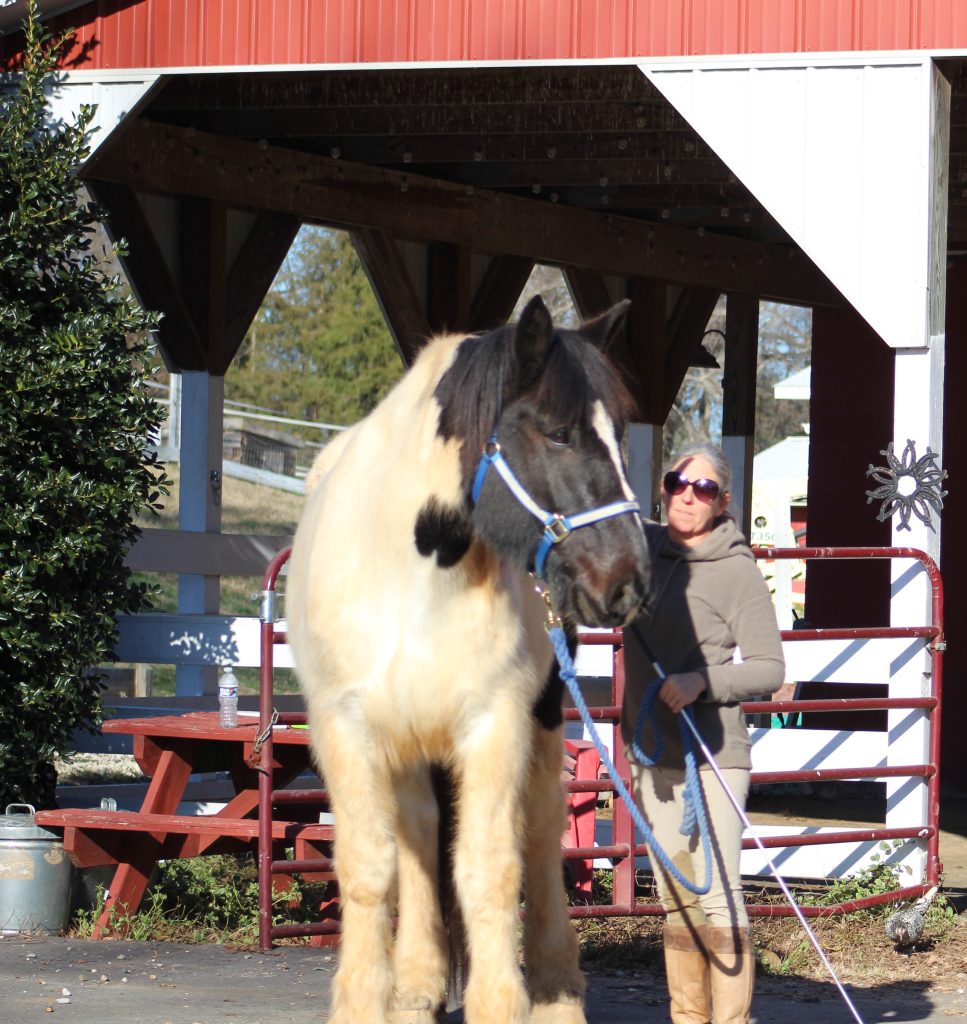
Grounding, Warrior Pose, Root Chakra and Horsemanship
One way horses explore their world is to test whether or not they can move things. If you want to see this in action, put a few objects on…
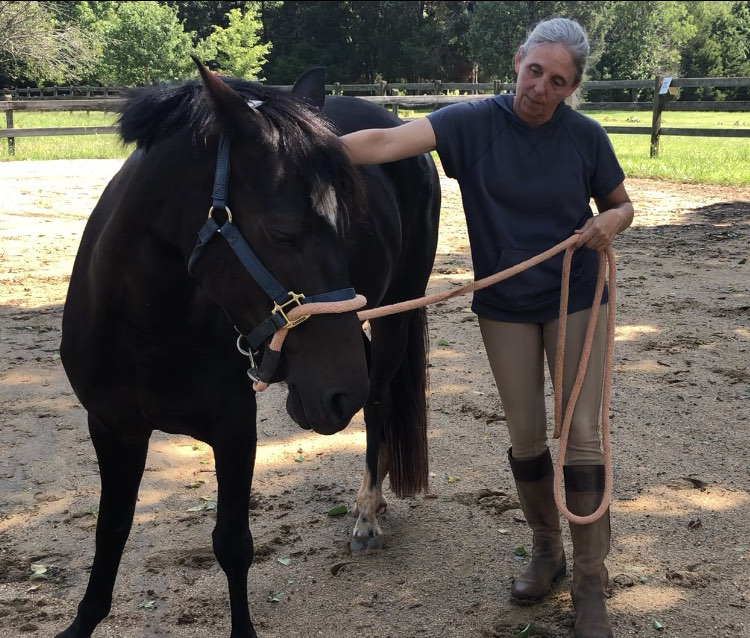
Working with the Nervous System
My work with horses has led me to take a deep dive into the inner workings of the nervous system. As a trainer, often my job is to help a…
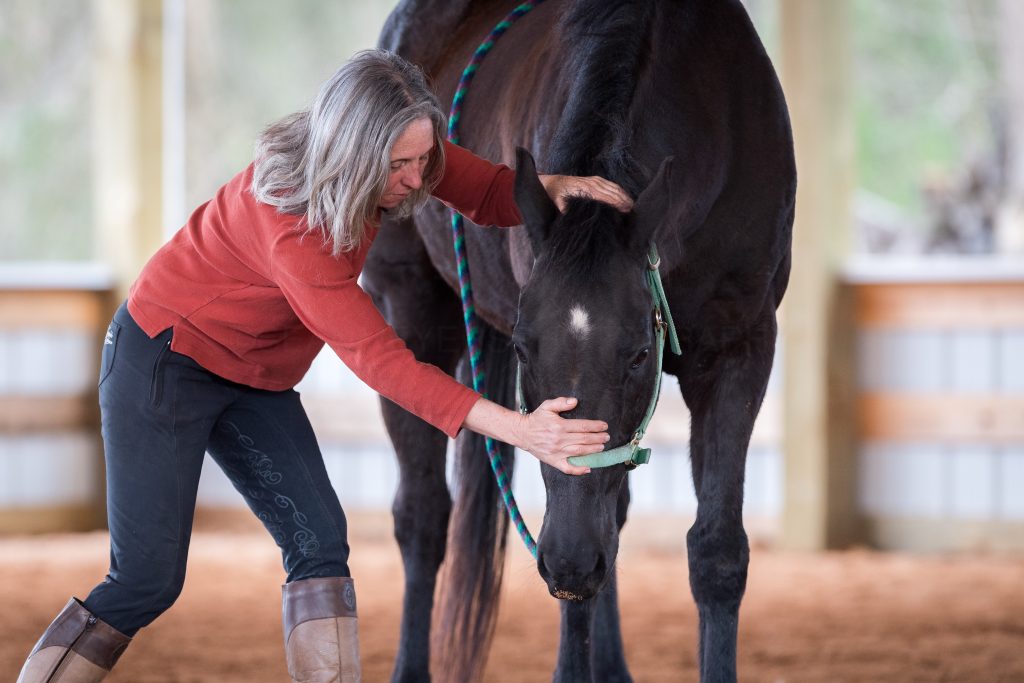
Calming the Anxious Horse
A frequent part of my job is helping anxious horses achieve a more relaxed, calm emotional and mental state. In other words, finding ways to turn on the parasympathetic nervous…

Riding with Precision
As riders, we often hear the advice to “use more leg.” In my experience, this often leads to riders that are squeezing and kicking, and horses that are desensitized to…
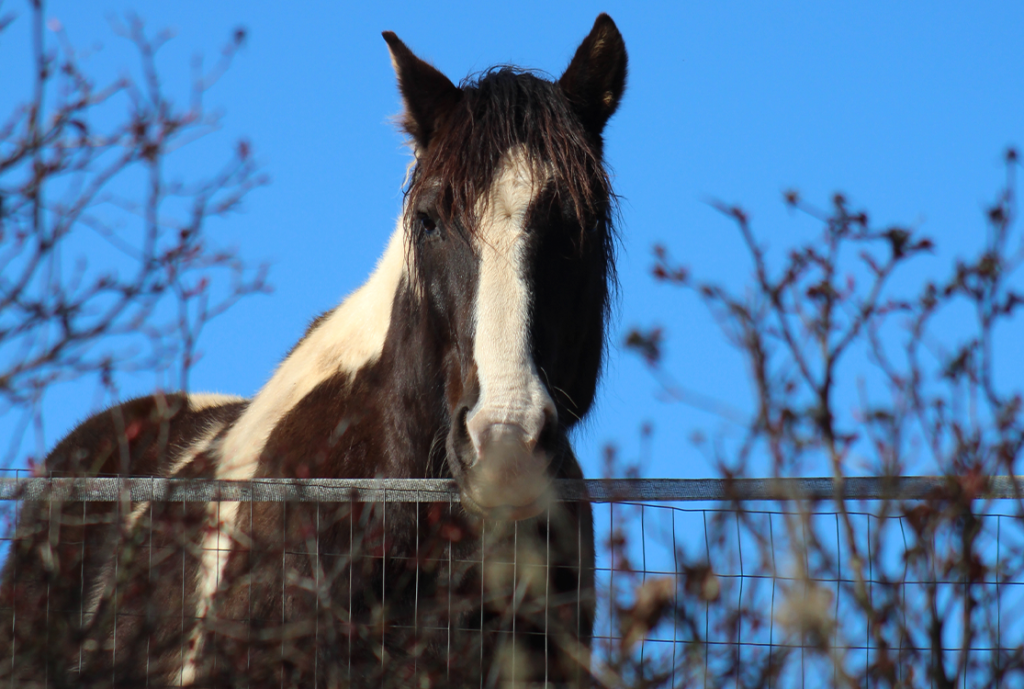
The Transformative Power of Listening
When I am teaching I never know exactly what is going to strike a chord, but I love it when something I say has a transformative impact. In a recent lesson…
